Native Plant Black Maire
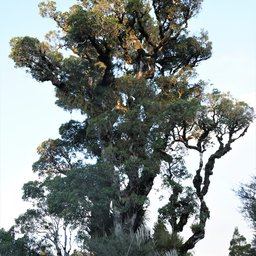

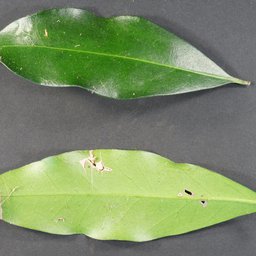
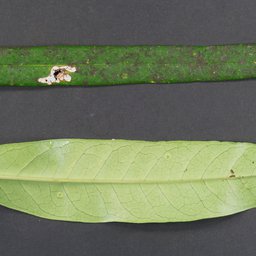
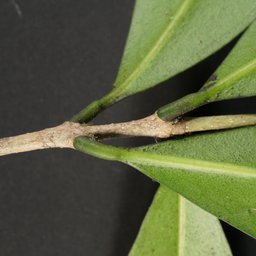

Nestegis cunninghamii Black Maire.
Height: up to 23 m. Trunk: up to 1.5 m diameter. Bark: rough, with corky rectangles. Leaves: in opposite pairs.
Adult leaves: 7-15 cm, are broad and widest a little short of their midpoint. They are dark green on the upper side and have a sunken midvein on the upper surface. The underside of the leaf is pale green with obvious veins. Petioles are stout, usually curved, approximately 10 mm long.
Juvenile leaves: 15-25 cm, long and narrow.
Flowers: 3-5 mm diameter, with 4 green petals. Fruit: red drupe, 1-2 cm long.
DISTINGUISHING FEATURES: Nestegis cunninghamii has corky bark, dark green leaves, the upper surface of adult leaves have sunken midribs near leaf base, and veins are clearly visible on undersides. The midrib on the upper surface of adult leaves of Nestegis lanceolata is flush with the leaf blade and veins are not clearly visible on undersides.
DISTRIBUTION: Lowland to montane forest from North Cape to Marlborough. They are rare in the Waitakere Ranges but there are a couple on the Karamatua to Mount Donald Mclean Track where there are also White Maire and several large Narrow Leaved Maire.
Pest Plant Willow



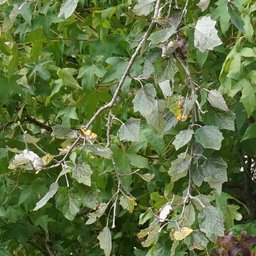

White Poplar or Silver Poplar Populus alba. Family: Salicaceae (willow)
Deciduous tree up to 30 m tall. Usually suckering from roots. Its bark is grey, smooth to shallowly fissured. Juvenile leaves are 3-10 x 2-9 cm, broadly triangular, with 3-5 lobes. Adult leaves are smaller, oval or circular, lobed or strongly toothed. Leaves alternate on stems, and are always white and downy below, white to green above. It spreads by suckering creating dense stands. It is tall, long-lived, and dominates the canopy.
Why is it weedy?
Prolific suckering habit ensures stands remain dense. Tall, long-lived, becomes dominant species in canopy. Tolerates drought, poor soils, mod hot to cold, little shade. Intolerant of poor drainage.
How does it spread?
No viable seed is produced, but suckers are spread by soil movement, intentional planting, and dumped greenwaste.
What damage does it do?
Forms huge stands, preventing native species establishing. Drains damp spots, roots clog watercourses.
Control: Cut and paste with Metgel or for small plants spray with Glyphosate (10ml/L).